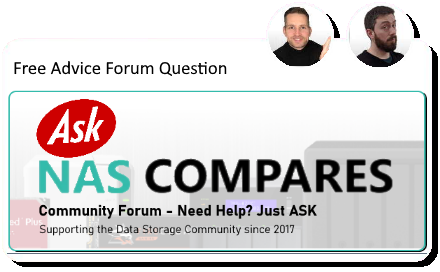10-24-2025, 04:03 PM
TerraMaster F2-424 gives you a lot of flexibility with both NVMe and HDD storage.
For your configuration, I’d recommend installing TOS 6 on the HDD pool and using your two M.2 SSDs purely for caching. Here’s why:
• Installing the OS on the HDD pool ensures stability and keeps your system boot partition separate from the high-wear M.2 drives.
• The Samsung NVMe SSDs will perform much better as read/write cache, accelerating file access and improving overall responsiveness, especially for smaller files and thumbnails.
• TerraMaster’s implementation of caching in TOS 6 is now stable and gives a clear boost when accessing media libraries or multiple concurrent users.
If you install TOS directly onto one of the M.2s, you’ll gain little speed benefit for everyday NAS use but will wear out the SSD faster due to system writes.
So:
1. Create your main HDD storage pool first (RAID 1 or RAID 0, depending on your redundancy needs).
2. Install TOS 6 on that pool.
3. Once set up, go into Control Panel → Storage → Cache and configure both M.2 drives as a read/write cache.
That layout gives you performance, reliability, and easier recovery later if you expand.
For your configuration, I’d recommend installing TOS 6 on the HDD pool and using your two M.2 SSDs purely for caching. Here’s why:
• Installing the OS on the HDD pool ensures stability and keeps your system boot partition separate from the high-wear M.2 drives.
• The Samsung NVMe SSDs will perform much better as read/write cache, accelerating file access and improving overall responsiveness, especially for smaller files and thumbnails.
• TerraMaster’s implementation of caching in TOS 6 is now stable and gives a clear boost when accessing media libraries or multiple concurrent users.
If you install TOS directly onto one of the M.2s, you’ll gain little speed benefit for everyday NAS use but will wear out the SSD faster due to system writes.
So:
1. Create your main HDD storage pool first (RAID 1 or RAID 0, depending on your redundancy needs).
2. Install TOS 6 on that pool.
3. Once set up, go into Control Panel → Storage → Cache and configure both M.2 drives as a read/write cache.
That layout gives you performance, reliability, and easier recovery later if you expand.





